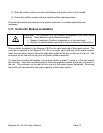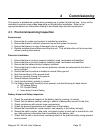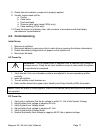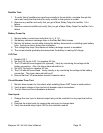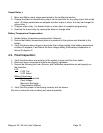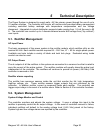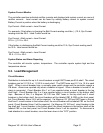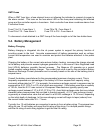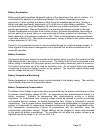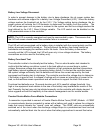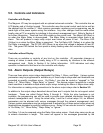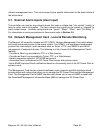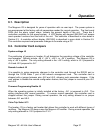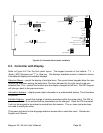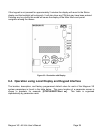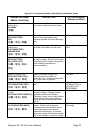Magnum VS –48 Vdc User’s Manual Page 23
Battery Equalization
Battery equalization equalizes the specific gravity of the electrolyte in the cells of a battery. It is
accomplished by applying a controlled overcharge to the battery. Equalization may be
appropriate (1) after a battery has been in float charge for extended periods time, (2) after a
battery has been significantly discharged, or (3) at the time of initial battery installation. There
are three methods by which the Magnum VS controller may initiate equalization: manual,
periodic and automatic. Manual Equalization is a one time equalization initiated by the user.
Periodic Equalization occurs after a set number of days. Automatic Equalization occurs after a
set time period of ac power failure or a set percentage of battery ampere-hour discharge. The
factory default for all equalization methods is OFF. Refer to the Equalization setup parameters
in the table of Section 6.4. The maximum equalization voltage is limited to the system maximum
voltage adjustment of -56.5 Vdc.
Presently, the equalization function is only accessible through the controller display keypad. A
future upgrade to the network management card is planned that will allow equalization to be
accessible remotely.
Battery Protection
An external disconnect should be mounted at the battery string to protect the system from the
high energy stored in the battery if a short occurs. The battery LVD will not be energized until a
battery string is installed with the proper polarity and the battery disconnect switch is turned on.
The battery connections are to be used for the battery only. Do not attach loads to the battery
connections or erroneous battery current will be reported. The controller reports Battery high
and low voltage alarms and LVD alarms.
Battery Temperature Monitoring
Battery temperature is monitored using a probe attached to the battery casing. The controller
reports Battery high and low temperature alarms.
Battery Temperature Compensation
The Battery Float Voltage is set to the value recommended by the battery manufacturer in order
to maintain correct battery charge at 25ºC. As temperature rises, electrochemical activity in a
battery increases. Similarly, as temperature falls, electrochemical activity in a battery
decreases. As temperature rises, charging voltage should be reduced to prevent overcharge
and possible thermal runaway. As battery temperature falls, voltage is increased to prevent
undercharge. The dc power system uses Battery Temperature compensation to change output
voltage to compensate for temperature changes monitored at the battery temperature probe.
This temperature compensation function is programmed into the controller using the
compensation parameters settings. Default settings can be changed to values recommended
by the particular battery manufacturer. The controller will not allow the system voltage to be
adjusted beyond the range of –47 Vdc to –56.5 Vdc.



